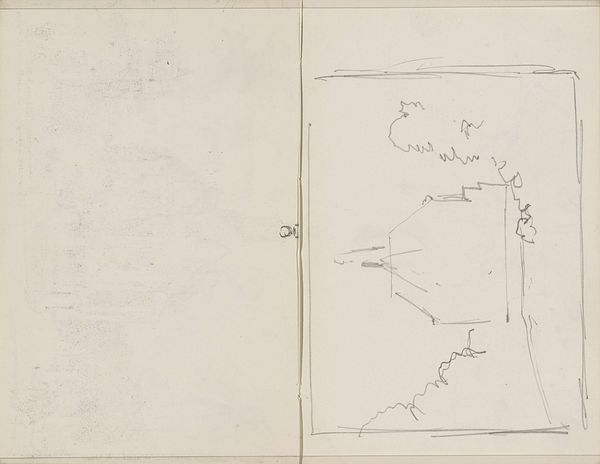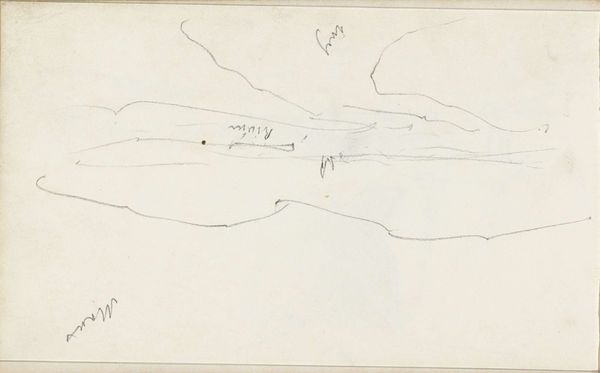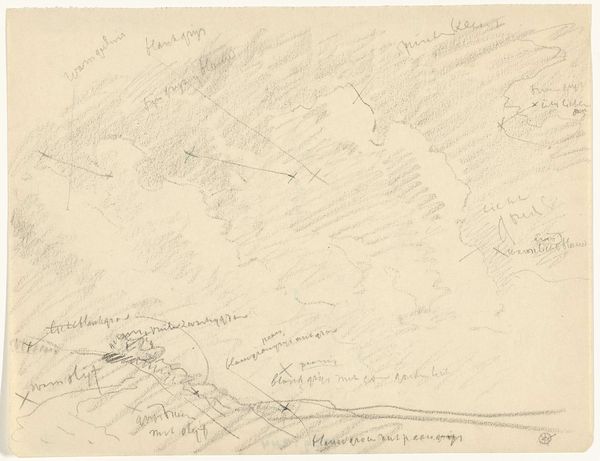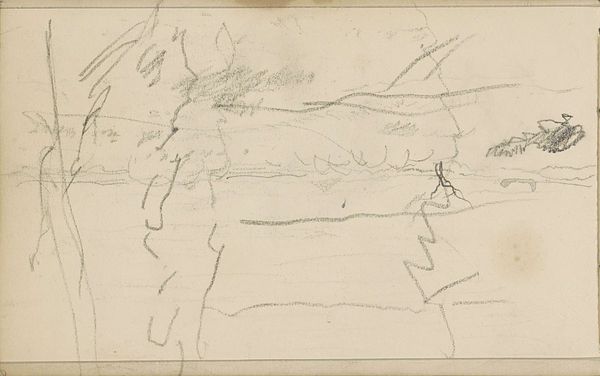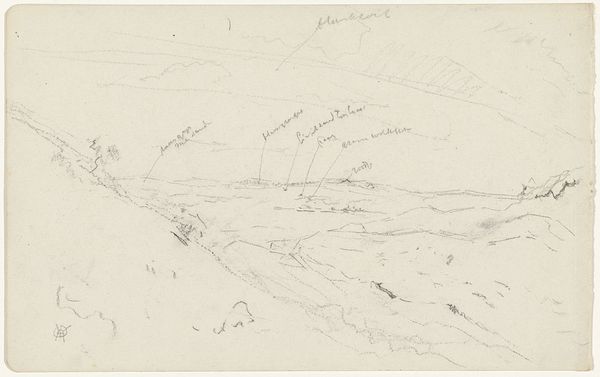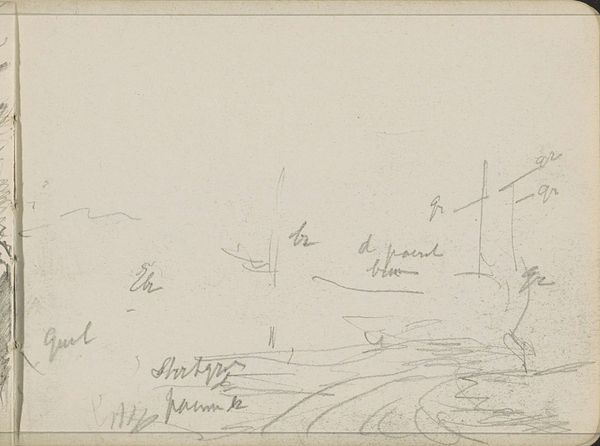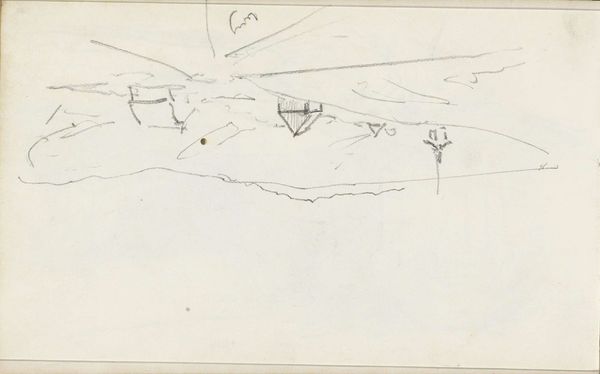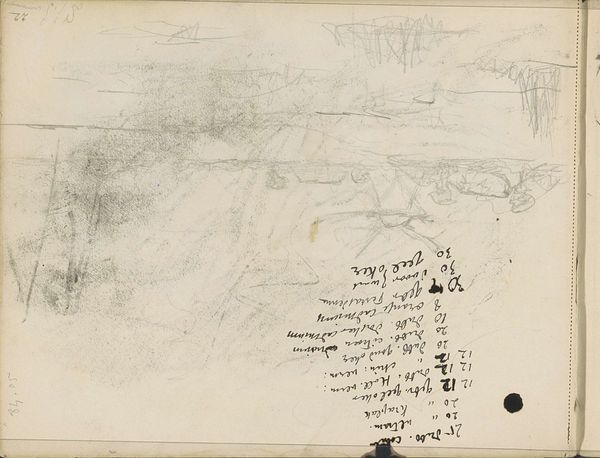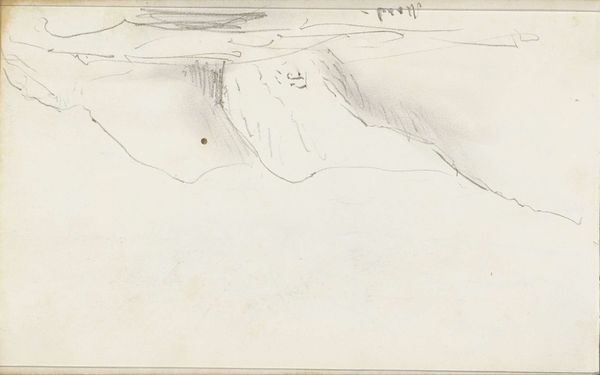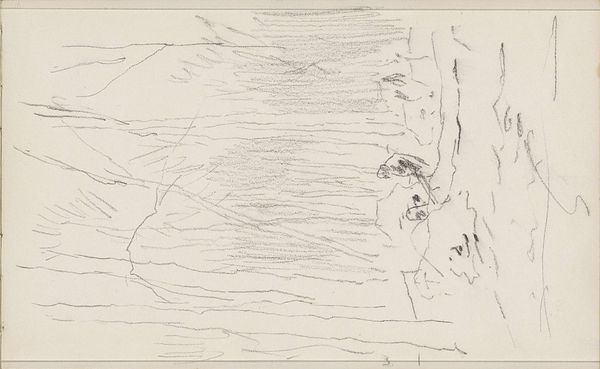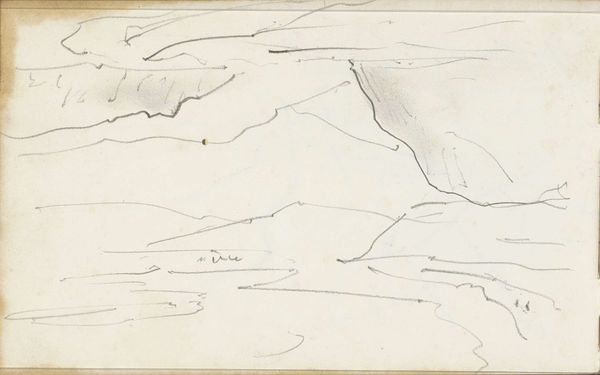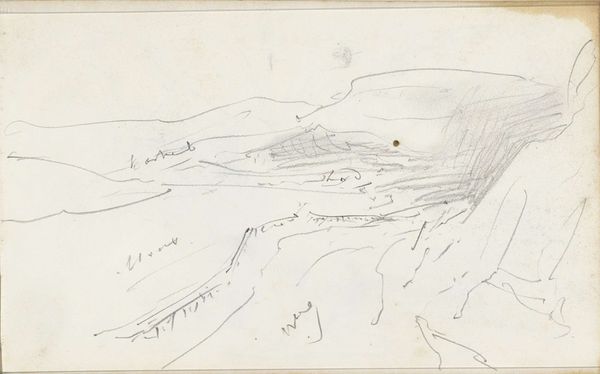
Copyright: Rijks Museum: Open Domain
Curator: Look at this drawing, Wolkenlucht boven water, Clouds over water. It's by Petrus Johannes Schotel and dates from about 1841 to 1865. Pencil on paper, currently residing here at the Rijksmuseum. Editor: My first impression? Ethereal. The wispy lines, almost like breath on glass, suggest a fleeting moment, a fragile beauty about to disappear. Curator: Schotel, known for his marine paintings, seems to be capturing something quite personal here. More than just clouds and water, I sense a deep engagement with ephemerality. A visual poem about time's passage. Editor: Absolutely. And thinking about its temporality makes me consider who had access to such reflection in the mid-19th century. Was Schotel aware of documenting climate and environment? Even if not explicitly, I wonder about how he thought about environmental agency by drawing something so fleeting? Curator: Well, his finished marine paintings were in high demand. Perhaps these pencil sketches served as a playground where he could truly engage in quiet exploration—free of the commercial expectations he might have faced elsewhere in his practice. Maybe he's asking how we come to feel deeply about these natural sites when many don't have any chance of experiencing them firsthand. Editor: That tension—between experiencing the sublimity of nature and being excluded from it due to socioeconomic circumstances—remains relevant. We can see through today’s environmental crises just how unequally experience these sites. It’s also a question about the language of “landscape," with all its historical weight of exclusion from a gendered, raced, classed nature. Is his sky available for all to look up to? Curator: Hmm, a sharp and vital question. And that leads to thoughts about how Schotel captures movement through minimal pencil lines. See how he renders the cloud forms above the water with varying degrees of pressure, almost as though to convey motion with as few elements as possible. Editor: It's remarkable how few lines are actually here to offer us all this visual data. In my view, what reads as softness isn't an attempt to "idealize nature," so much as trying to contend with just how indifferent nature feels to many during a time of enormous upheaval and industrialization. The water almost vibrates. It challenges this myth that "landscape" just presents the visual appeal of sites for enjoyment, because the landscape depicted here also implicates you as a witness. Curator: Perhaps this is Schotel extending us that opportunity today as well? A challenge to bear witness through feeling. Editor: I hope so. A fragile invitation to reconsider both our place in and relationship with the sky and water.
Comments
No comments
Be the first to comment and join the conversation on the ultimate creative platform.
